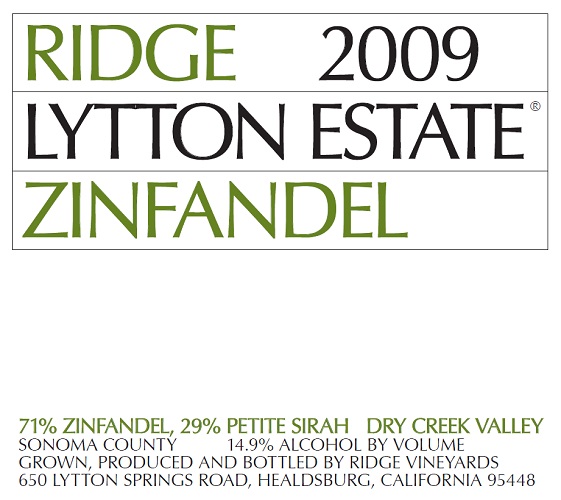
2009 Lytton Estate Zinfandel
Wine Information
71% Zinfandel, 29% Petite Sirah
Vintage
2009
Vineyard
Lytton Springs
Appellation
Dry Creek Valley
Alcohol By Volume
14.9%
Vintage Notes
Each year, after harvesting and fermentation, we blind-taste the various lots to determine which are most characteristic of the site. These are then blended for the Lytton Springs. Riper wines of excellent quality are frequently held out to make a small amount of Lytton Estate, which this year came from hundred-year-old vines planted on the hills around the winery. During natural-yeast fermentation, maceration time was held to six days, avoiding over-extraction of tannins. Aged for fourteen months in air-dried american oak, the wine exhibits the briary black fruit and mineral notes typical of these old vines; petite sirah contributes significant structure. The 2009 Lytton Estate will soften and gain in complexity over the next ten years.
History
In 1972, Ridge made its first Lytton Springs from vines planted at the turn of the 19th century. We purchased both the eastern and western portions of the vineyard in the early 1990s. (In the 1870s, under “Captain” William Litton’s ownership, the two were part of one property; spelling evolved into “Lytton” by 1903). Occasionally, certain of the vineyard blocks though of excellent quality, are held out of the Lytton Springs because of higher ripeness, or failure to integrate well during assemblage tastings. We combine these to make the Lytton Estate.
Growing Season
Rainfall: Thirty-four inches (below normal)
Bloom: Late-May
Weather: Dry winter saved by spring rains and followed by a warm, dry summer.
Winemaking
Harvest: 11 September – 04 October
Grapes: Average brix 26.0˚
Fermentation: Natural primary and secondary. Pressed at six days.
Barrels: 100% air-dried american oak barrels (25% new, 20% one year old, 55% four to five years old).
Aging: Fourteen months in barrel
All estate-grown grapes, hand harvested. Destemmed and crushed. Fermented on the native yeasts, followed by full malolactic on naturally-occurring bacteria. 0.78 grams/liter tartaric acid and a total of 1.8 % rehydration during fermentation; minimum effective sulfur (35 ppm at crush, 197 ppm over the course of aging). Pad filtered at bottling. In keeping with our philosophy of minimal intervention, this is the sum of our actions.
Consumer Tasting Notes
Average Rating: 90.7
No. of Tasting Notes: 53
View this wine on CellarTracker
Wait!
In order to qualify for user related discounts, you must log in before proceeding with checkout. Click the button below to log in and receive these benefits, or close the window to continue.
Log In